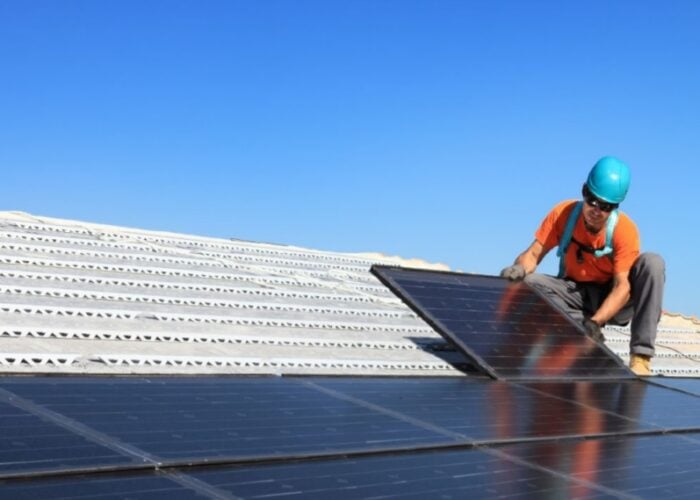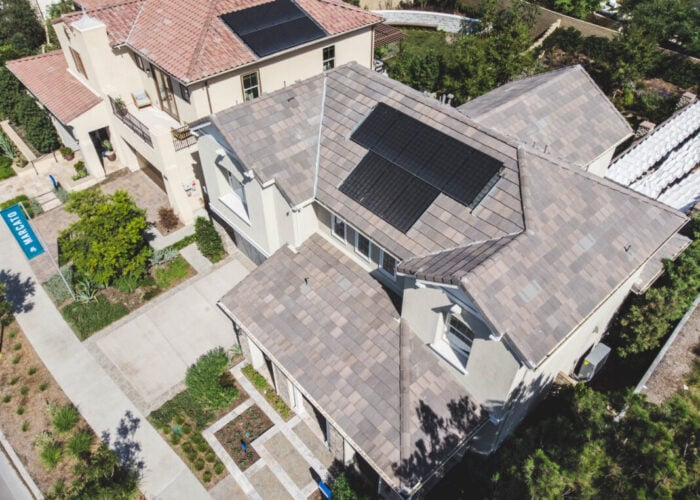
Tesla deployed just 27MW of rooftop solar in Q2 2020, its worst quarter for deployment on record, but chief executive Elon Musk remains buoyant about the product’s long-term prospects.
Reporting its Q2 2020 financials yesterday, Tesla disclosed that rooftop solar installations fell by 23% sequentially, reflecting both seasonality and the added impact of pandemic-enforced restrictions in US states. But its year-on-year decline of 7% will be of alarm considering its Q2 2019 deployment figure of 29MW was the company’s previous lowest.
Unlock unlimited access for 12 whole months of distinctive global analysis
Photovoltaics International is now included.
- Regular insight and analysis of the industry’s biggest developments
- In-depth interviews with the industry’s leading figures
- Unlimited digital access to the PV Tech Power journal catalogue
- Unlimited digital access to the Photovoltaics International journal catalogue
- Access to more than 1,000 technical papers
- Discounts on Solar Media’s portfolio of events, in-person and virtual
| Q2 2019 | Q3 2019 | Q4 2019 | Q1 2020 | Q2 2020 | |
|---|---|---|---|---|---|
| Solar deployment (MW) | 29 | 43 | 54 | 35 | 27 |
| Storage deployment (MWh) | 415 | 477 | 530 | 260 | 419 |
While the firm provided no specific details, Tesla did state that sales of its Solar Roof product had “roughly tripled” from Q1 to Q2 2020. It added its installation team was being expanded to increase deployment further.
The firm’s ongoing poor performance in solar is a far cry from the ~200MW of deployment Tesla used to record per quarter between 2016 and 2017 when it was the market leader in the US. It has long since lost its crown to Sunrun, which earlier this month announced it had reached an agreement to acquire its rival Vivint Solar in a groundbreaking transaction.
But on a call with analysts following the results disclosure, Musk remained upbeat about the product’s prospects moving forward, stating he was “very excited about that business potential”.
Musk pointed towards a recent adjustment to Tesla’s pricing for retrofit solar, a change which he claimed makes Tesla Solar the “lowest cost solar in the United States”, roughly 30% cheaper than the US average at US$1.49 per watt.
“I think that product is really coming together and it's only going to get better later this year,” he said.
It was a different story however in energy storage, where deployment rebounded strongly after a dip in Q1. Deployment of 419MWh was up 61% sequentially and a marginal increase on the 415MWh deployed in Q1 2019.
When discussing the storage unit’s fortunes, Musk repeated two assertions; that the combined energy unit will one day be just as big, if not larger, than Tesla’s automotive business, and that the main factor restraining continued growth is the cost-effective production of battery cells.
Tesla yesterday confirmed that it had selected a site near Austin, Texas, for its next US Gigafactory, and Musk also teased a further expansion of its partnerships with Panasonic, CATL, LG and “possibly others” in this regard. More information is to be revealed at the firm’s ‘Battery Day’ in September.
“The battery and solar will both be enormous. And they kind of have to be in order… for us to have a sustainable future. And we've got a great product roadmap on that front as well,” he said.
More information on the peformance of Tesla's energy storage business, including news of its first profitable quarter for the Megapack product, can be read on sister publication Energy-Storage.news.







